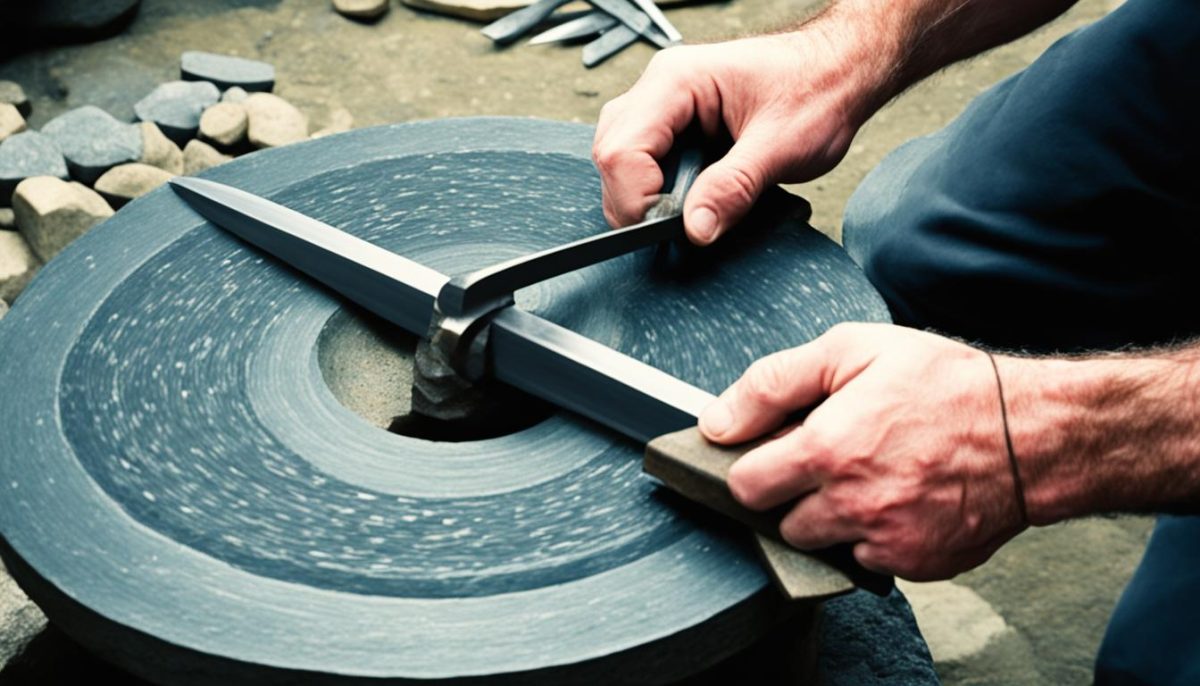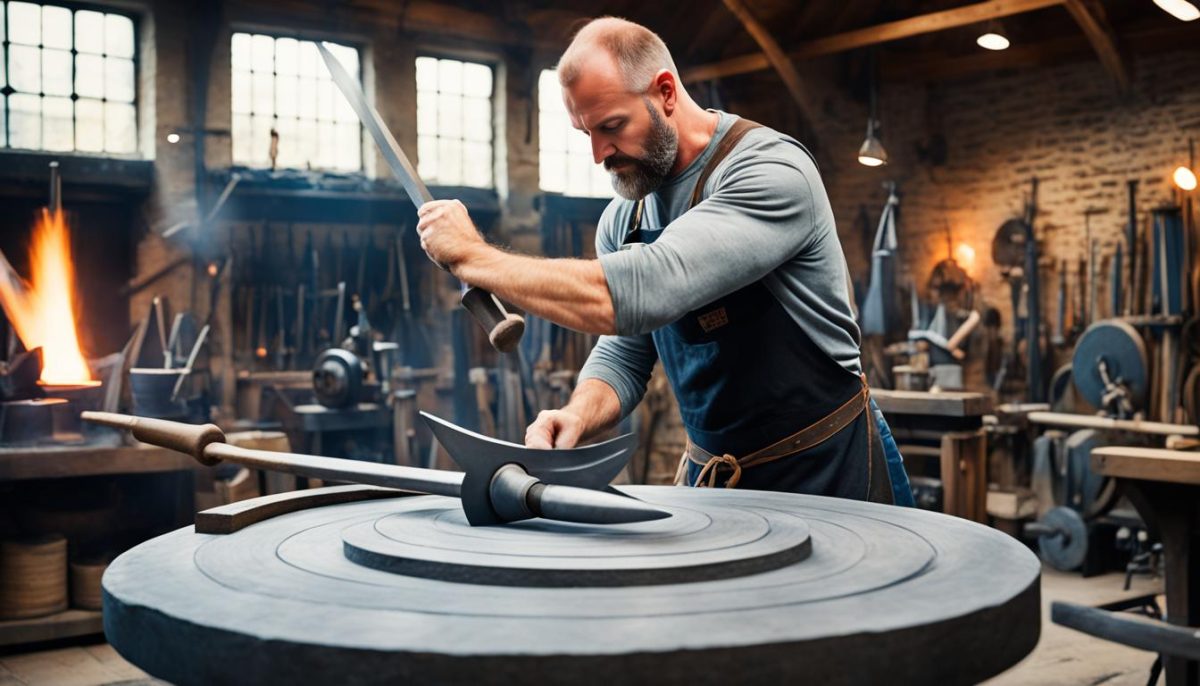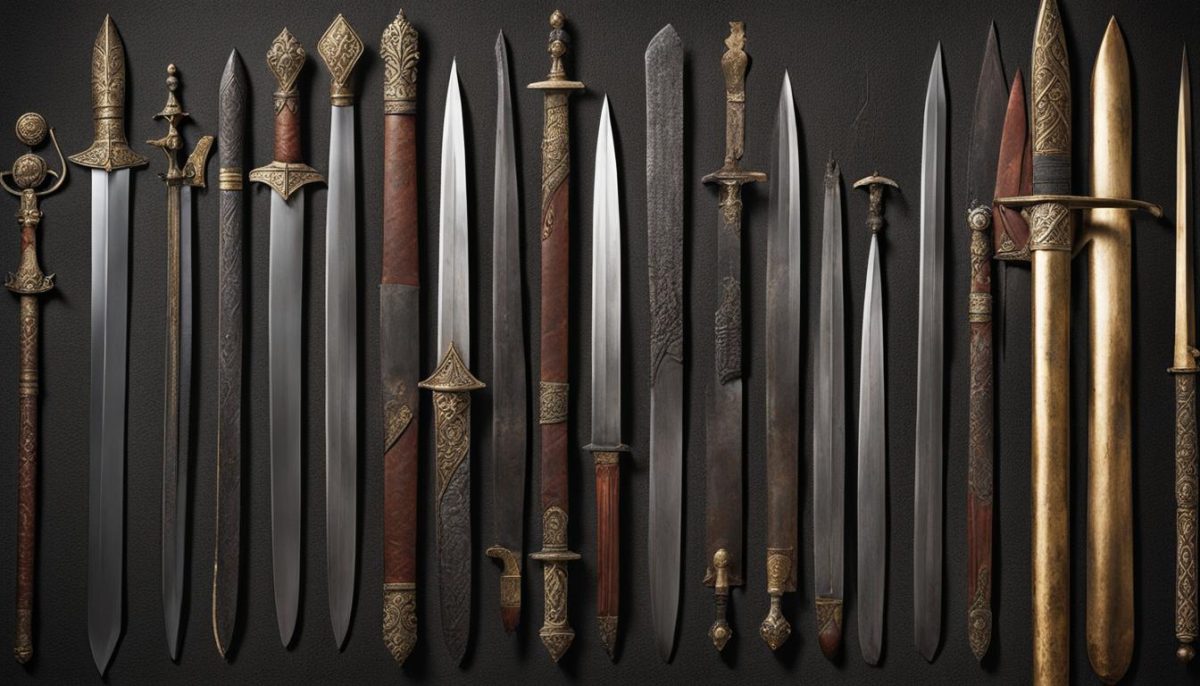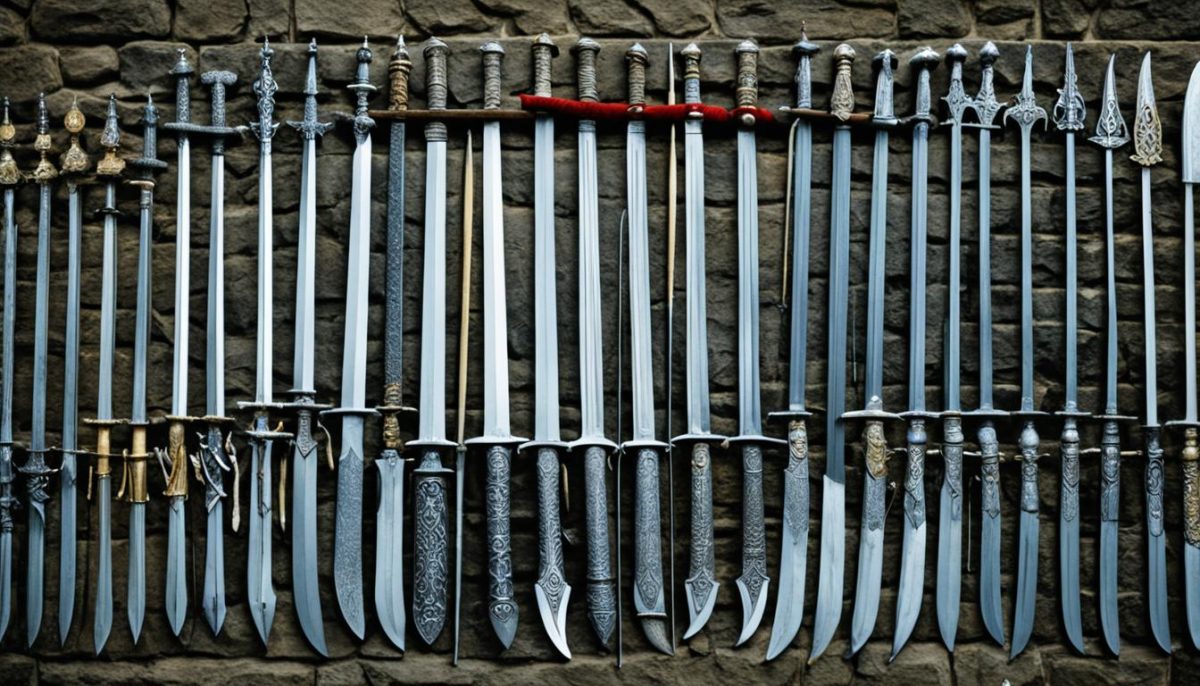The clang of metal and the roar of the forge were once familiar sounds to the armorer, tasked with the critical role of maintaining the medieval sword. Beyond its lethal potential, the sword stood as an emblem of honor, necessitating regular upkeep to preserve both its functionality and its symbolic value. The sharpening techniques employed by these guardians of historic weaponry merged practical skill with a profound respect for the warrior’s tools of trade. Central to the process was the whetstone, a simple yet pivotal implement in the realm of blade maintenance.
The armorer’s craft was steeped in tradition and expertise, with each motion in the sharpening process executed with deliberate and learned precision. As we delve into the historical methods of honing these formidable blades, let us appreciate the meticulous care that ensured each sword was battle-ready, its edge a mirror of its wielder’s preparedness. Let us journey back to an era where the sharpened sword was not only an instrument of war but a testament to the artistry and significance of the armorer’s craft.
Understanding Medieval Swordsmanship and Maintenance

For the medieval warrior, the sword was far more than a piece of metal; it was an extension of their being and a key to survival in the frenzied throes of medieval battle. The dedication to sword maintenance ensured combat readiness and a warrior’s honor on and off the battlefield. Let’s delve into the role swords played in medieval combat, the sacred rituals of maintenance, and the specific materials that ensured the longevity and lethality of edge weaponry.
The Role of the Medieval Sword in Combat
During medieval times, mastery of the sword was essential for victory in battle. Crafting combat tactics and techniques around the sword’s design, warriors spent countless hours practicing to synchronize their movements with the blade’s weight and reach. The sword’s condition was a pivotal factor in a warrior’s success, necessitating a deep understanding of its care.
Regular Sword Maintenance: A Warrior’s Ritual
Regular maintenance of the sword was not mere upkeep; it was a ritualistic act that reflected a warrior’s discipline and respect for their weapon. From the removal of rust to the alignment of the blade’s edge, every step was crucial for maintaining a sword’s sharpness and combat effectiveness. This meticulous process ensured a warrior’s readiness for the unpredictability of medieval warfare.
Materials and Tools Used for Sharpening Swords
The art of sword maintenance employed a variety of sharpening materials, each chosen to achieve the perfect edge. Below is a list of the crucial tools along with their typical uses:
| Tool | Material | Coarseness | Use |
|---|---|---|---|
| Whetstone | Natural stone | Varied, from rough to fine | Basic sharpening and refining edge |
| Oilstone | Synthetic or natural stone soaked in oil | Fine | Finishing and polishing the edge |
| Leather Strop | Leather | Very fine | Honing the edge to razor-sharpness |
These tools, passed down through generations, represent the historical lineage and meticulous care entwined with the art of sword maintenance. Knowing when and how to use these tools was knowledge as valuable as the art of swordplay itself.
Medieval Swords Sharpened: Techniques and Processes
Intricately woven into the fabric of medieval society was the armorer’s skilled practice of swordcraft, a practice that often determined the effectiveness of a blade in battle. Mastering the sharpening process was as much about art as it was about maintaining a weapon. Central to this art was the knowledge and proper use of medieval abrasives, the selection of which could deeply influence the sharpness and durability of a sword. Whetstoning, a key technique, involved not only physical skill but also an understanding of the materials at hand.
Sharpening Stones and Abrasives of the Middle Ages
Medieval whetstoning depended heavily upon natural resources, making the most of materials such as sandstone or novaculite. These stones did more than simply sharpen – they were the cornerstone of the sharpening process that often started with a coarser grain and progressed to a finer finish. The impact of these abrasives on sword maintenance was significant, as maintaining optimal sharpness was crucial for a combat-ready blade. Armorers and warriors alike were versed in discerning the right stone for each sword, ensuring the continuation of the martial traditions that revered the keen edge of a well-honed weapon.
The Art of Whetstoning: A Step-by-Step Guide
Whetstoning was not about haphazardly grinding a sword against a stone but involved a practiced method that began with the selection of the correct whetstone. The sharpener had to maintain a consistent angle and pressure, adapting to the curve and length of the blade for uniform sharpness. This process was a meditative and skill-intensive exercise, reflective of the swordcraft mastery that was expected and celebrated within medieval martial traditions. It was patience and precision that transformed a dull blade into one fit for a knight.
Sword Sharpening Rituals and Traditions
Surrounding the technical aspects of sword sharpening were myriad rituals and traditions, imbuing the process with a spiritual essence. These practices not only bound communities in common belief but also instilled a sense of pride and respect for the weaponry. Recognizing the sharpening process as a fundamental component of upkeep, it was often accompanied by specific chants or offerings, adding a layer of cultural depth to an otherwise utilitarian task. Delving into these historical sharpening rituals unveils a world where the sword and its maintenance were central to a warrior’s life, intertwining practical needs with the values of the age.


